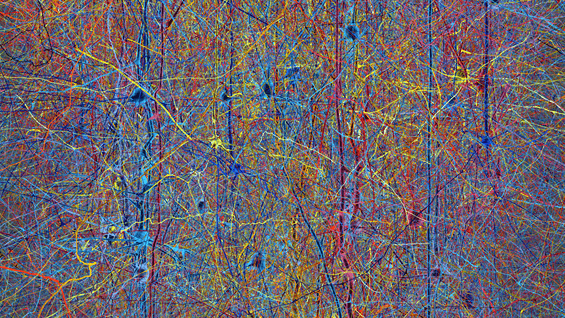
Our Lister Fellows and wider Lister community produce a huge variety of research, regularly publishing journal articles, giving talks and achieving other milestones. Today we are showcasing three recent research highlights from members of the Lister community.
Trailblazer of Neuroscience: Srikanth Ramaswamy

Lister Fellow Srikanth and his colleague Amrita Benoy were featured in the European Journal of Neuroscience’s Trailblazers of Neuroscience series in July. The series aims to identify and promote young researchers and provide them an opportunity to highlight their scientific path and creativity, and to provide a platform to showcase their ideas and work.
Their paper, a review of the neurotransmitter histamine’s role in the brain’s neocortex, is published alongside an interview with Srikanth on his scientific career and educational background. Srikanth is a multidisciplinary researcher with expertise in neuroscience, electrical engineering and computer science. As a scientist of colour, he is passionate about diversity, equity and inclusion. He is on the Board of Directors of the ALBA network which promotes diversity and inclusion in brain sciences.
The review explores how histamine may function in areas like attention, learning, and memory. Histamine has received relatively little research interest compared with other neurotransmitters, so there are many open questions about how it works. The review maps some of these knowledge gaps and offers ideas on how interdisciplinary research tools may help scientists better understand histamine’s role in higher brain functioning.
Maternity and microbiome: Amanda Sferruzzi-Perri

Lister Fellow Amanda’s research into the maternal microbiome and its effect on placenta growth has generated significant interest recently, being picked up by the BBC and other publishers.
The paper, ‘Maternal gut Bifidobacterium breve modifies fetal brain metabolism in germ-free mice,’ will appear in October’s issue of the journal Molecular Metabolism. It joins a growing body of literature on how gut flora influences developmental processes.
Scientists know that maternal gut flora changes during pregnancy, and that one species in particular, Bifidobacterium breve, increases its numbers in both pregnant women and pregnant mice. Amanda and her colleagues ran a comparative study on the offspring of germ-free pregnant mice, alongside the babies from mouse mothers inoculated with a strain of B. breve. They studied the brains of the young mice to see whether the presence of the bacteria made a difference to their development.
It turned out that baby mice whose mothers carried B. breve had differences in brain growth and metabolism, with positive effects on some important pathways. The results could indicate that providing pregnant women with ‘good’ bacteria could benefit their children.
DNA repair discoveries: Ross Chapman

Lister Fellow Ross Chapman’s research group has published a major new paper, ‘Shieldin and CST co-orchestrate DNA polymerase-dependent tailed-end joining reactions independently of 53BP1-governed repair pathway choice,’ in Nature Structural & Molecular Biology.
The paper explores the activity of shieldin, a recently discovered protein complex involved in repairing damaged immune cell DNA. Scientists know that shieldin is involved in DNA repair reactions, but its mechanism has so far been unclear. One theory is that it interacts with CST, another DNA-binding protein complex, to fill in the gaps left by damaged areas of the DNA molecule.
Ross and his team found evidence for an interdependent relationship between shieldin and CST. They discovered that removing one or other of these protein complexes from an immune B cell had the same result – a cell that could not perform important stages of the DNA repair process. It seems that shieldin acts as a catalyst for gap-filling, adapting the repair capabilities of the CST.
Shieldin has a dark side too – it plays a pathological role in tumour development, blocking certain DNA repair pathways. However in cancer mutations where the tumour-suppressing BRCA1 gene is missing, shieldin’s role seems to be more modest than expected. Removing shieldin only had a minor effect in the team’s tests, slightly delaying the deadly stage of disease in embryo models.



